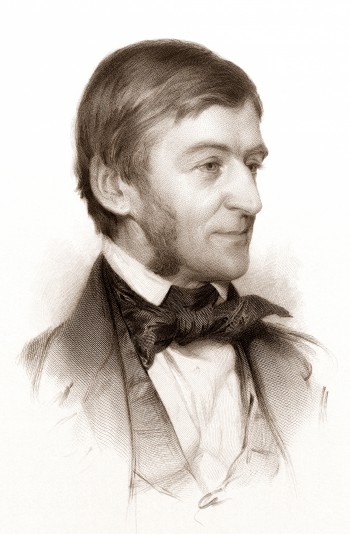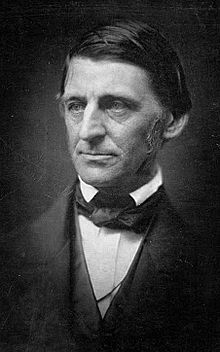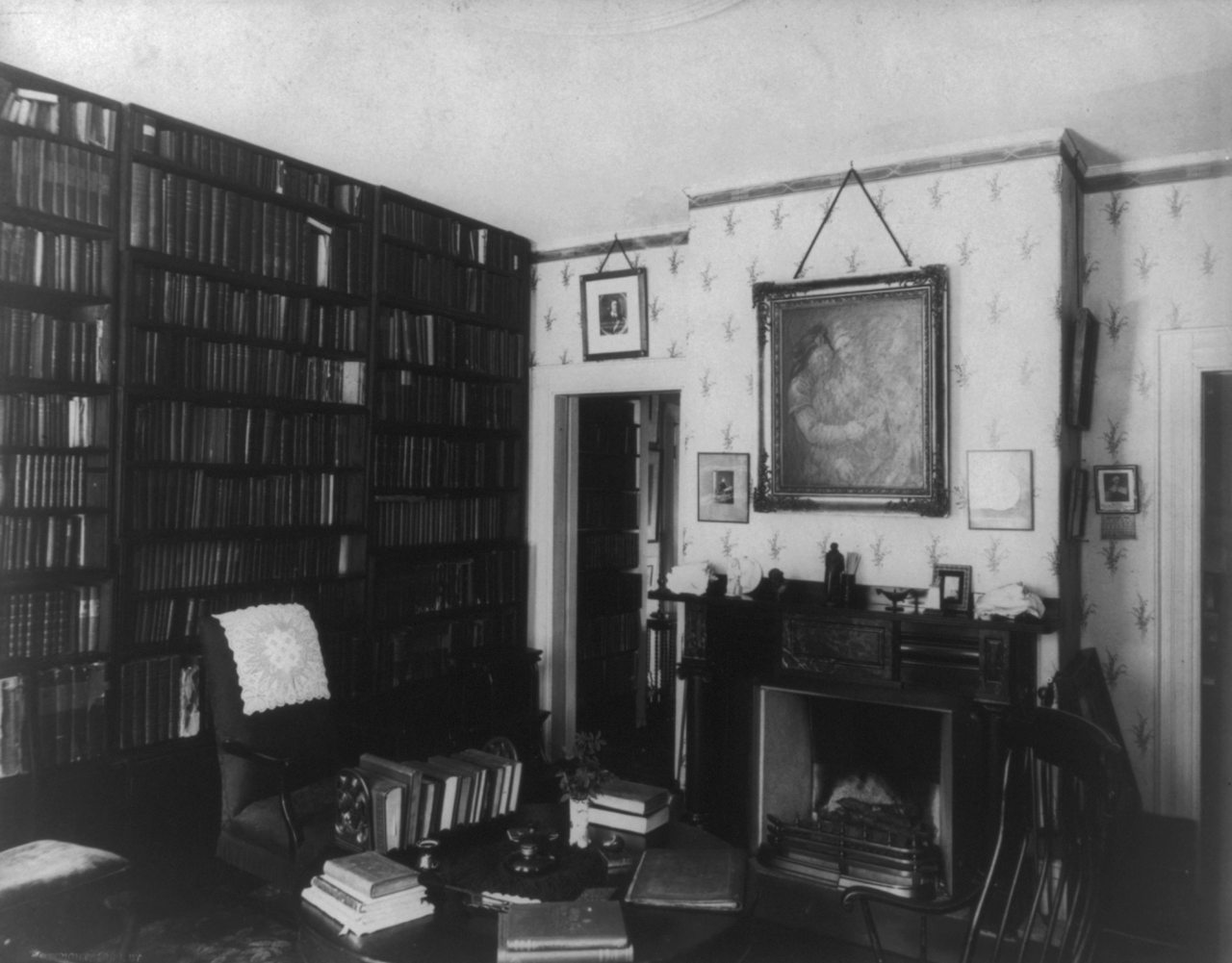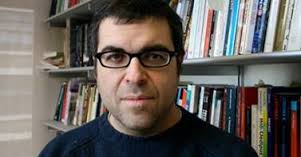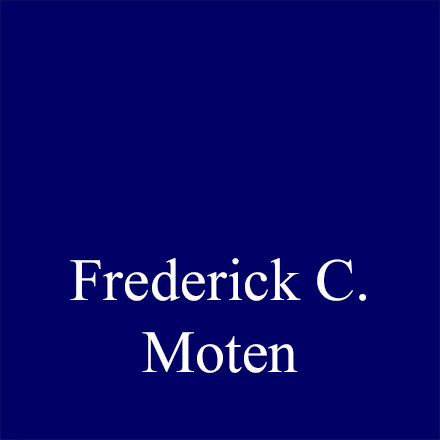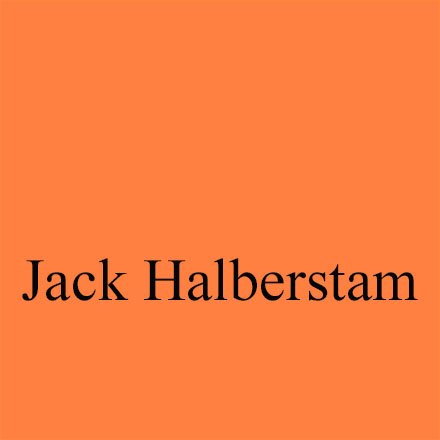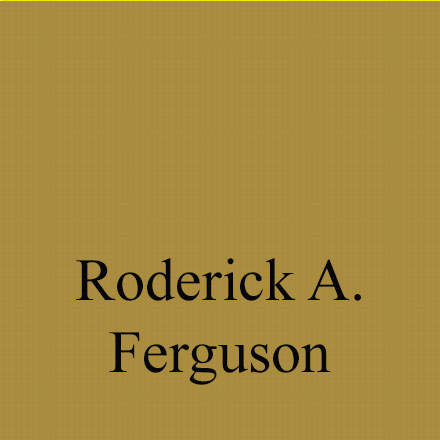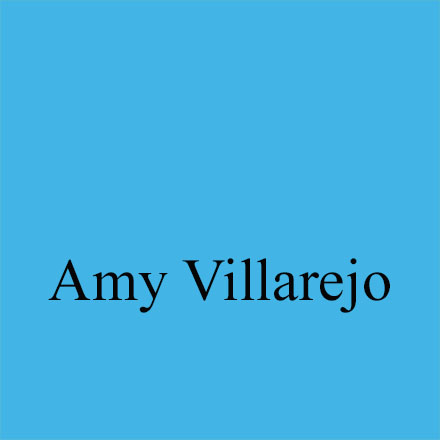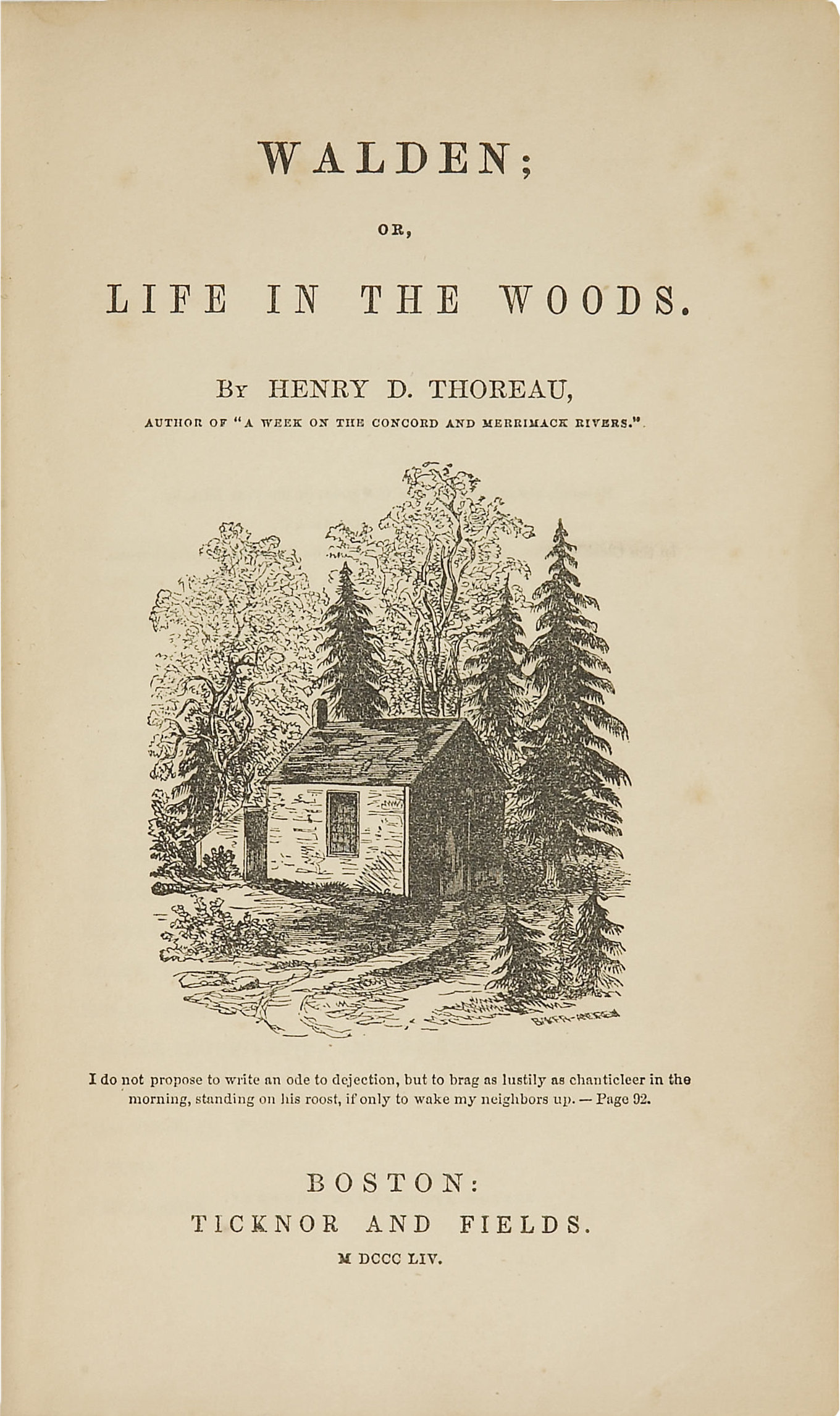Professor Nergis Erturk of Penn State (nue5@psu.edu) has joined the editorial collective of boundary 2. Professor Erturk will develop articles, reviews, and special issues in her areas of interest, namely, (post)colonial histories and theories of language and writing practices; Marxism, communism, and translation (including questions concerning Soviet Orientalisms, language politics of the Comintern, and literary communism); critical regionalism in west and central Asia; Turkey and contemporary cultures of resistance. With Özge Serin (Columbia, Anthropology), Nergis is currently editing a special issue on “Marxism, Communism, and Translation.”
Author: boundary2
-

The Realm of Potentiality
by Roderick A. Ferguson, University of Minnesota
~
Of José Munoz’s inspiring work, the argument in which I would most locate and recognize my own interests and solidarities would be his almost incantatory observation in Cruising Utopia: The Then and There of Queer Futurity. After calling for a queer politics that dares to “see or imagine the not-yet-conscious,” a politics that can derive much of its revolutionary energies from past insurgencies, he wrote, “The not-quite-conscious is the realm of potentiality that must be called on, and insisted on, if we are ever to look beyond the pragmatic sphere of the here and now, the hollow nature of the present. Thus, I wish to argue that queerness is not quite here; it is in the language of Italian philosopher Giorgio Agamben, a potentiality.”1 I am drawn to this argument in particular because it is clear that for José a very powerful realm of potentiality—one that can provide us with the resources for the not-quite-conscious, for the utopian future whose materiality we can find in the audacious dreams and visions of past formations—lies in and with minoritized communities and peoples themselves. Remember, for instance, that he opens the chapter from which the passage comes with the 1970 manifesto produced by that queer of color organization that disbanded almost as soon as it emerged—Third World Gay Revolution. In his chapter, the organization stands as a metaphor for that dazzling resource of all minoritized communities—that is, the power to yearn for and suggest something beyond the given state of affairs. And in many ways, he was, trying to encourage us to develop optics for seeing (where minoritized life is concerned) not only what “is” but what—if provided the conditions for its own liberation—“can be.”
In this way, his argument and indeed his work are rebuttals to those stultifying and empiricist methodologies that attempt to pin down the lives of queers, women, and people of color, pinning them down in that longstanding and misguided effort to capture their “true” and “unchanging” meanings. In this regard, we find José performing a maneuver that is characteristic of his work: the use of minoritized subjects as levers for epistemological and philosophical considerations. In addition, his work assumes political import as it excavates and rearranges critical formations like queer theory and Marxism to point to and call for insurrections in the current state of affairs, recognizing that the existing conditions never exhaust historical or social possibility. Here, he takes a page from Herbert Marcuse who argued, “to express and define that-which-is on its own terms is to distort and falsify reality. Reality is other and more than that codified in the logic and language of facts.”2
By coincidence or providence, I have been reading Howard Eiland and Michael W. Jennings’s biography Walter Benjamin: A Critical Life. There is a part in that text that makes me appreciate José’s originality and genealogy all the more and helps me figure out what to do with the space he left behind. In a summary of the young Benjamin’s 1913-1914 essay “Metaphysics of Youth,” Eiland and Jennings write, “What we do and think, [Benjamin] says, is filled with the being of our ancestors—which, having passed away, becomes futural. Each day, like sleepers, we use ‘unmeasured energies’ of the self-renewing past… In awakening its own historical resonance, the present gathers to a moment of decision, by which, rooted in the past, it grounds a future…”3 Queerness, like the figure of sleep for Benjamin, was José’s way of describing a practice that—while sometimes giving the appearance of disengagement—actually reprocesses the “unmeasured energies of a self-renewing past” to break new and non-normative ground.
_____
Visit the full José Esteban Muñoz gallery here.
_____
Notes
1. José Esteban Munoz, Cruising Utopia: The Then and There of Queer Futurity (New York: New York University Press, 2009), 21.
Back to essay2. Marcuse, “A Note on Dialectic,” in The Essential Frankfurt School Reader, ed. Andrew Arrato and Eike Gebhardt (New York: Continuum, 2000), 447.
Back to essay3. Howard Eiland and Michael W. Jennings, Walter Benjamin: A Critical Life (Cambridge: Harvard University Press, 2014), 44.
Back to essay -
Brown Study
by Deborah Paredez, University of Texas-Austin
~
It was the blue hour.
That time when bodies turn silhouette against the vast azure.
When you stumble home from the bar towards bed—yours, anyone’s—to, as Joni Mitchell sings, “lay down an impression and your loneliness.”1
When, at last, the baby sleeps and you can now prepare for your morning class.
The blue hour.
Which actually lasts less than an hour, the blue burned to dawn after about 20 minutes.
But what’s an hour, really, when you measure your days against straight time?
It was the blue hour on the last class day of the semester. I was writing up my final notes for my lecture course, “Performing America.” How to end it? How to convey to my students a model for performing (against) America? I turned to José Feliciano’s version of “The Star-Spangled Banner,” letting it play over and over as I stared out the window towards the cerulean horizon.
It was José Muñoz who, years ago, first introduced me to Feliciano’s minor key take on the anthem. It was José who taught me how to practice a critical and ethical attentiveness to a wide range of performances by Latina/o artists. José who helped so many of us identify “all sorts of antinormative feelings that correspond to minoritarian becoming.”2 José who helped us hear in Feliciano’s song the tentative strumming of those first measures, the plaintive “Ohhhhh,” the steady murmur of the melody and the languorous voice refusing to keep the time. The lag. The longing the longing the longing. This, José instructed us, is what it sounds like to feel brown.
For those of us invested in and, indeed, in love with Latina/o performance (studies), José’s work was the light of the blue hour: the source of illumination against which we positioned our own bodies of work in the hopes of being made to seem more luminous, more clearly defined. The distinct shape of our work was impossible to achieve in any other light. He named our feelings and their relationship to our (lack of) access to citizenship; he chronicled the disidentificatory practices so central to our identificatory pursuits; he legitimated our strivings for that sparklingly sapphire queer beyond.
Oh say, can you see, by the dawn’s early light?
It was the blue hour on 4 December 2013, a moment of passage.
It was the blue hour and Feliciano’s voice shirred the silence and the dawn broke the blue and I taught my class, playing Feliciano’s song under my lecture for the whole hour, and I returned to my office and received word of the news.
It was the blue hour and it passed too soon and I was left feeling brown.
_____
Visit the full José Esteban Muñoz gallery here.
_____
Notes
1. Joni Mitchell, “Down to You,” Court and Spark, CD, Asylum, 1974.
Back to essay2. José E. Muñoz, “Feeling Brown, Feeling Down: Latina Affect, the Performativity of Race, and the Depressive Position,” Signs 31.1 (Spring 2006): 679.
Back to essay -
Our Chusma, Ourselves: On the Ghosts of Queerness Past
by Juana María Rodríguez, University of California, Berkeley
~
José was a ghost even before he ever left us. He refused “the burden of liveness” demanded of a young genius, delivering instead a performance haunted by party boy, theorist, punk, hipster, mentor, nerd, sissy, and chusma par excellence (Disidentifications, 189). (Chusma: loud, bitchy, hysterical, snarky, demanding and unapologetically colored, a hot, messy “occasion to speak queer and beyond” [195].) Into the hallowed spaces of erudite scholarship, he dragged the remains of his working-class immigrant upbringing like the gaudy train of a second-hand wedding dress ready to take over the room, sullied and storied. These were the unruly ghosts he conjured and enlisted to do the dirty work of making institutions accountable to those they had excluded. Muñoz translated class shame into the high theory spectacle of chusmería to refuse the beige decorum of whiteness and middle-class respectability and revel in the colored excesses of feminized drama and gossip, crying, a moco tendido, into a sea of left-over Latino feeling.
The future queerness of José’s intellectual imagination has always been peopled with the still beating hearts of the ghosts of his chusma past, those far away from the limelight of the academic stages he graced so ungracefully. Carrying the memory of dreams deferred, and the promise of raucous outrage, he demanded a new formulation of time that could encompass both. Refusing the burden of liveness is about rejecting the restrictive temporality of minoritarian subjects to dwell in the contained chambers of our singular relevance, to call out the ways we precede and exceed the stages of our signification. To name the haunts of our hurts is to envision the pressures and potentialities of being social subjects capable of envisioning future worlds together.
Refusing liveness, and forever animated, the performance of Muñozity that erupted whenever José arrived (late of course) was always a happening that he had helped to create and defile before his entrance. Like a street kid, passing out flyers to the latest club opening, Muñoz invited everyone to the party, ready to crowd the dance floor of his utopian world-making. The air would change with the rumor of his presence; it became perfumed with the sticky possibility that there might be enough breathing room for others who were never imagined as belonging, let alone worth inhaling. But once on the dance floor, José made you work for your place in the soul train line. Like the oracle that he was, he had the ability to read all the possibilities of your intended academic attire, and pluck out the precise theoretical accessories that would turn your shit out. A ghost that could send you back to start, armed with a new shade of fabulous to make your own. The dark emotions of José’s open windows were also there in the teary blue light of city mornings stumbling home alone to contemplate a lifetime of losses.
I like to imagine José as a queer child in his Hialeah home, the imprint of clear hard plastic still pressed onto the tender flesh of his moist thighs, pondering the performance of the color green, theorizing the scent of his tias’ heavy bosoms, and feeling brown. It is these twists of queer time that float through his work—the ghosts of other horizons. Chusmería is about honoring the imprint of plastic, of La Lupe whining to Heidegger, of stepping out of and into the ecstasy that exists in another temporal register where José is about to walk into the room (or was that him who just left?). Even and especially in the stillness of death, he asks us to refuse the burden of liveness, insisting instead that we make the most of chusma gestures of ephemera, the trace in the text, the question in the quote, the promise in the queerness yet to come. Having joined the ghosts in the wings throwing shade and brilliance, he invites us—even now—to come out and make a queer production of our broken hearts.
_____
Visit the full José Esteban Muñoz gallery here.
_____
-
Please Come Flying
by Kathryn R. Kent, Williams College
Please Come Flying1
From Brooklyn, over the Brooklyn Bridge, on this fine morning,
please come flying…Come with the pointed toe of each black shoe
trailing a sapphire highlight,
with a black capeful of butterfly wings and bon-mots,
with heaven knows how many angels all riding
on the broad black brim of your hat,
please come flying.Bearing a musical inaudible abacus,
a slight censorious frown, and blue ribbons,
please come flying.
Facts and skyscrapers glint in the tide; Manhattan
is all awash with morals this fine morning,
so please come flying.Mounting the sky with natural heroism,
above the accidents, above the malignant movies,
the taxicabs and injustices at large,
while horns are resounding in your beautiful ears…
…please come flying.On the second-to-last page of Cruising Utopia, José cites my analysis of Elizabeth Bishop’s encomium-as-inducement-as-enticement, “Invitation to Miss Marianne Moore.” He summarizes the heart of my reading: “Kent explains the ways in which Bishop’s work signaled a queer discourse of invitation that did not subsume the other but instead was additive” (188). Not “subsum[ing] the other” but inviting, inciting them–this might just as well describe José’s presence, his understanding of friendship, his sometimes fierce teasing, which pushed me to recognize and own my weaknesses as a critic, an activist, a writer, a co-conspirator, as well as my strengths. I don’t think I could have fathomed the dynamics of this poem if I hadn’t spent six years in graduate school with José as my constant, loving, demanding interlocutor. As he writes of the Bishop poem, “[t]his invitation, this plea, is made despite the crushing force of the dynasty of the here and now. It is an invitation to desire differently, to desire more, to desire better” (189). How many times did so many of us find José’s work, and his way of being—itself, in his words, a form of “performative provocation”—calling us to “collective political becoming,” to a “stepping out of this place and time to something, fuller, vaster, more sensual, and brighter” (ibid.)? In that somewhere, someplace, not yet here, I like to imagine José is waiting, not always so patiently, for the rest of us to, in Bishop’s words, “please come flying.”
_____
Visit the full José Esteban Muñoz gallery here.
_____
1. Elizabeth Bishop, The Complete Poems: 1927-1979 (New York: Farrar Strauss Giroux, 1987), 82-83.
Back to essay -
A Leap Into the Void: Finding Muñoz through the Process of Losing Him
by Jack Halberstam, University of Southern California
~
Some will say that José Ésteban Muñoz died an untimely death – he died too young with too much still to do. However, like his formulation of queerness as a state of being that is present in its absence, available as a lost past, unreachable as a beckoning future, I would rather say that Muñoz died as he lived, in a queer time that he may not have chosen but that insistently chose him. Like many of the exotic queer art world natives about whom he wrote, Muñoz sacrificed everything within the here and now for a then and there that had not yet and could not yet arrive. Like Jack Smith arriving late to a performance that he would then abort, or like Fred Herko meeting death early by making his last performance “a perfect jeté” out of a friend’s apartment window (Cruising Utopia, 148), Muñoz left us all shocked and surprised by his sudden exit, saddened and bereft by his final decline. Muñoz’s departure was not quite a jeté, nor was it a failure to show; it was rather an abrupt cessation of a life that had spun quickly around a chain of precious moments offering brief glimpses of another world while losing energy in the present for the here and now.
How might we understand Muñoz’s early death through his own work as a gesture of refusal, a refusal of timeliness itself? In “A Jeté Out the Window” in Cruising Utopia, Jose writes about the staging of Fred Herko’s suicide as his final performance. Using the concept of surplus value to frame acts, work, modes of being which exceed capitalist flows, José uses Herko’s leap into the void as an example of an excessive gesture – one that could be read as useless, childish, wasteful, nonsensical – but that literally refuses all that capitalism, and capitalist notions of time, offer. Instead, it signals the way in which, within queer aesthetic production, escape and refusal are juxtaposed in an altered temporality that does not respect the markers of “late” and “early” at all.
In the context of queer worlds, furthermore, excess and loss sit side by side as potent evidence of the utopian imagination. For the queer utopian, the ideal world cannot be reached through the here and now; it must be conjured by crazy, risky, wild leaps into the void. This notion of the utopian situates art as a guide to future terrains that may or may not ever surface. Muñoz reminded us of this other function for art through his bravura readings of Ernst Bloch. Bloch, Muñoz tells us, understands art as “enacting a pre-appearance in the world of another mode of being that is not yet here” (147). The “not yet here,” like the “already gone,” represent non-straight temporalities within which other possibilities appear fleetingly, like ghosts from the past, glimmers of the future, markers of the anticipated and the lost.
In Fred Herko’s death-embracing leap out of the window of a friend’s apartment, Muñoz finds a performance that defies explication, understanding or rationality; it defies capitalist logics of sense and accumulation. It sheds what it should embrace and embraces what it should fear. It is perfect in its unknowability and absolute vulnerability. The controlled leap into the void performed by Herko makes art out of what is otherwise an uncontrollable descent into death. And Herko’s last dance places queer art in an oblique relation to life itself. If vulnerability is proximity to harm, to unbecoming, then queerness seeks to rewrite the conditions of pain, harm and fear not as identity formations, but as routes to wild embodiment.
Accordingly, I do not come to mourn José Esteban Muñoz; I come to celebrate his wild sense of time, possibility, potentiality. “Queerness is not yet here,” he writes in Cruising Utopia. “Queerness is an ideality. Put another way, we are not yet queer. We may never touch queerness, but we can feel it as the warm illumination of a horizon imbued with potentiality. We have never been queer, yet queerness exists for us as an ideality that can be distilled from the past and used to imagine a future” (1). José, in death as in life, brings us a step closer to “the warm illumination of the horizon” that he possessed the unique ability to see, to describe and to touch. The fact that this horizon is as often death as it is art should not dissuade us from basking in its glow.
_____
Visit the full José Esteban Muñoz gallery here.
_____





